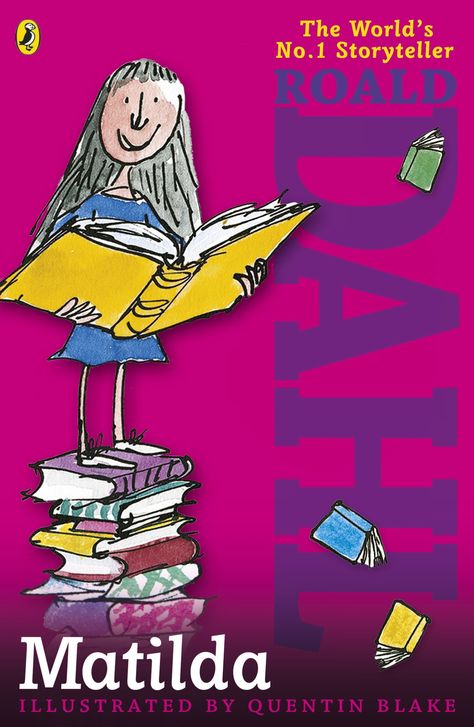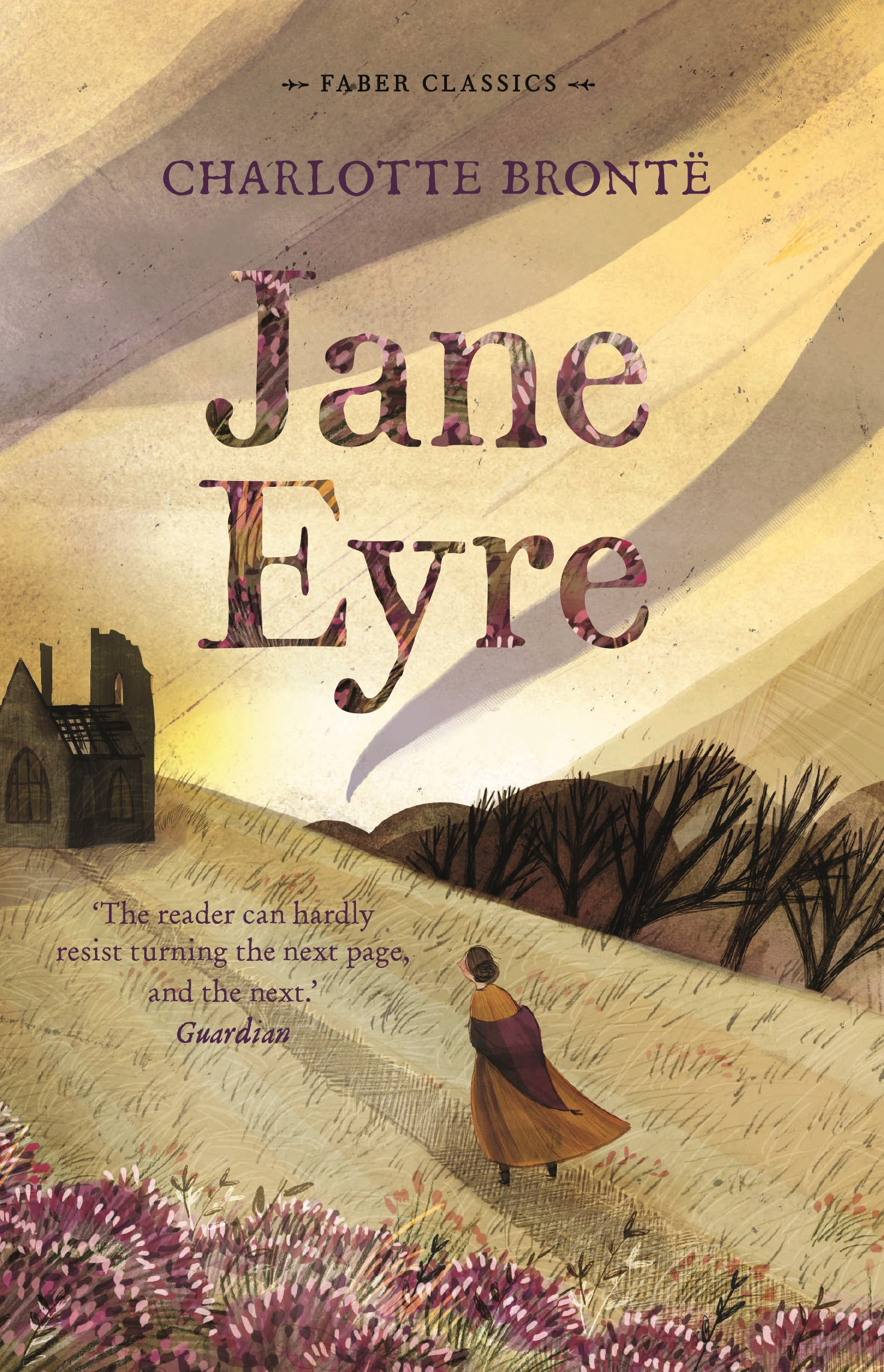Little gems : Stunning short stories by women writers
Short stories might not be as popular as long novels, one of the arguments being that there’s not much room for character development and thus you are never very invested in them. But for me, stories don’t always need a clear beginning, middle, and an end. Sometimes it can be just a chapter in someone’s life or talk about a particularly difficult or humorous situation. And it’s quite fun to let these little nuggets occupy your mind, especially during stressful times like these. Here I recommend three of my favorite short story collections if you want to dip into this wonderful world.
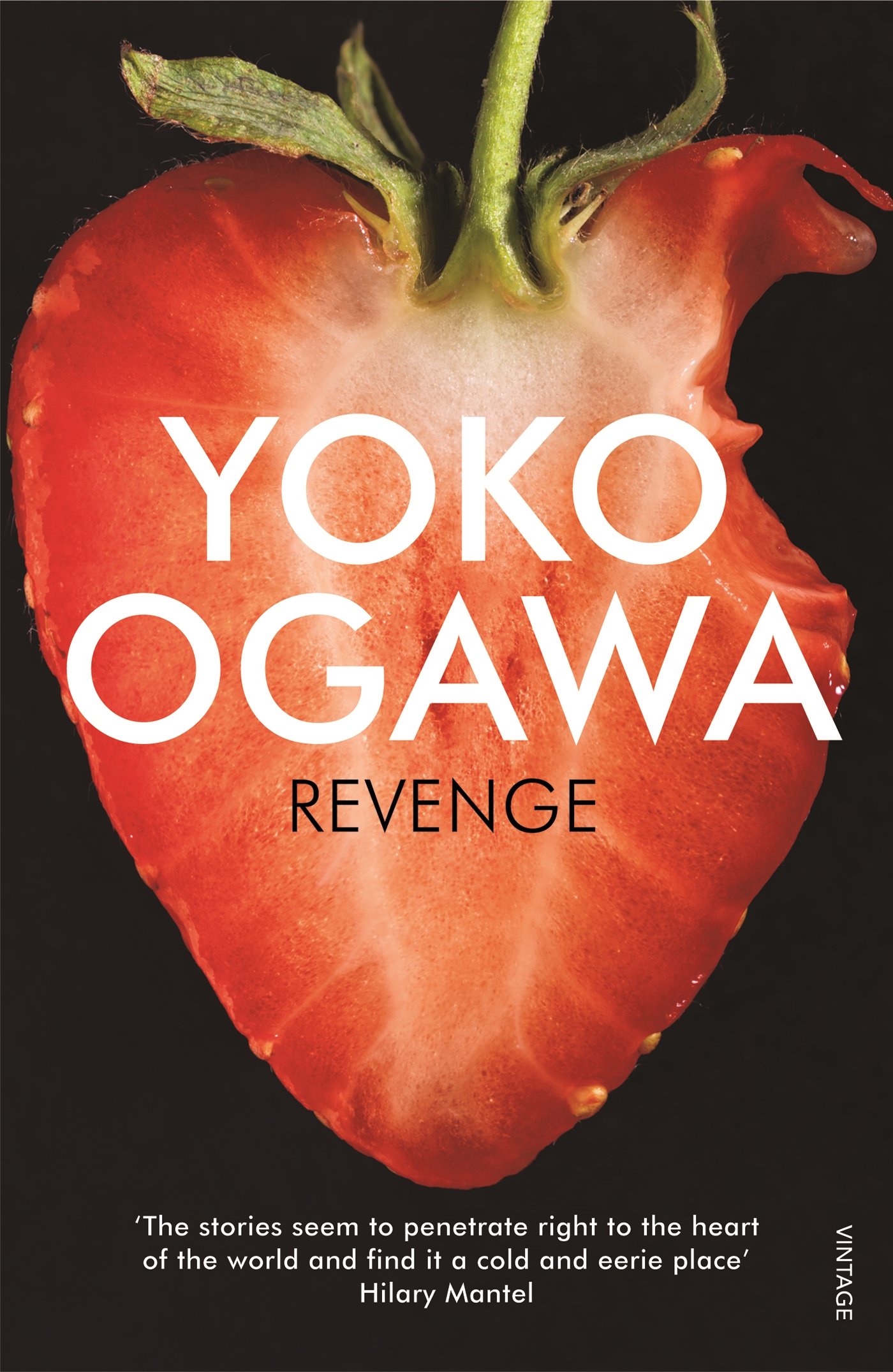
Revenge is more of a Japanese literary short novel, with its stories interconnecting in overt and covert ways that remind you of Haruki Murakami. I could read Revenge by Yoko Ogawa a hundred times over and still not be bored. The book was initially published in 1998 but its popularity soared after its English edition came out. Translated by Stephen Snyder, the 11 dark tales in Revenge are macabre at their best.
The writing is simple yet gripping and the stories are eerily good. There’s a story where a woman buys strawberry cake for her son on her birthday, but he’s been dead for years. In another, the neighbor of a struggling novelist discovers a carrot in the shape of a human hand before her ex-husband’s handless body turns up in the same garden. Then there’s a bag maker who designs intricate bags for a woman whose heart is outside her chest. Revenge is full of these odd characters that send a chill down your spine.
The Thing Around Your Neck by Chimamanda Ngozi Adichie
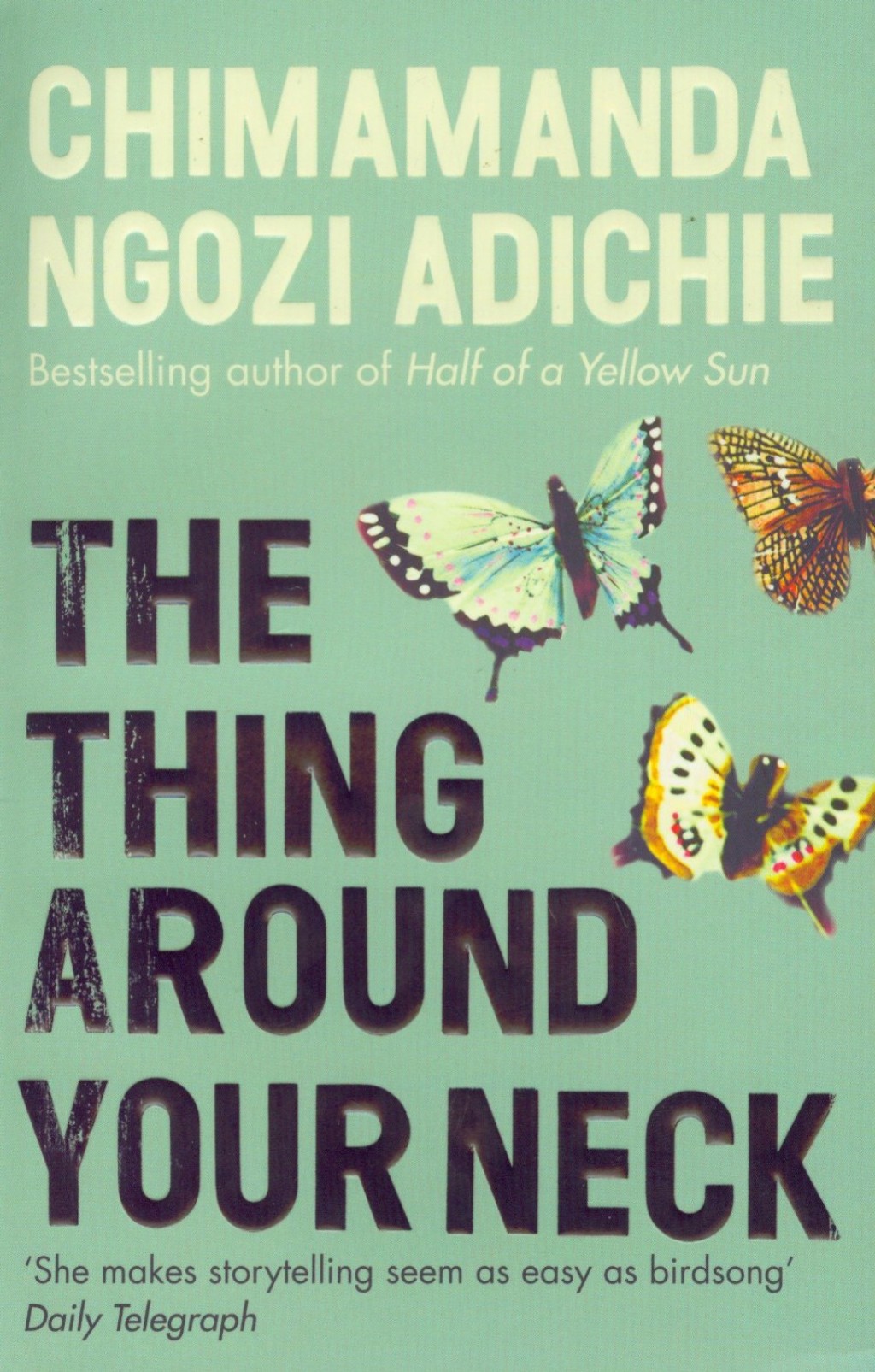
I love the way Adichie writes. There’s something very raw and real about the emotions of her characters. I really enjoyed ‘Purple Hibiscus’, which was longlisted for the 2004 Man Booker Prize, and ‘We Should All Be Feminists’ and ‘Americanah’. But it is her short story collection, ‘The Thing Around Your Neck’, that is my all-time Adichie favorite.
A collection of 12 short stories, The Thing Around Your Neck focuses mainly on the lives and experiences of Nigerian women caught up in political or religious violence. Only one story has a male narrator.
In ‘The American Embassy’, a woman applies for asylum but can’t bring herself to talk about her son’s murder during the visa process. In ‘Tomorrow Is Too Far’, a woman reveals the secrets behind her brother’s death. Then there’s ‘On Monday of Last Week’ where a university educated Nigerian woman is forced to work as a house help in America to make ends meet.
These brilliant stories of women coping with change, loneliness and longing, and learning to survive the odds, are about what binds us as friends, lovers, and families. They are also, in trademark Adichie style, heavy with social and political comments that make you think.
‘The Awakening and Other Stories’ by Kate Chopin
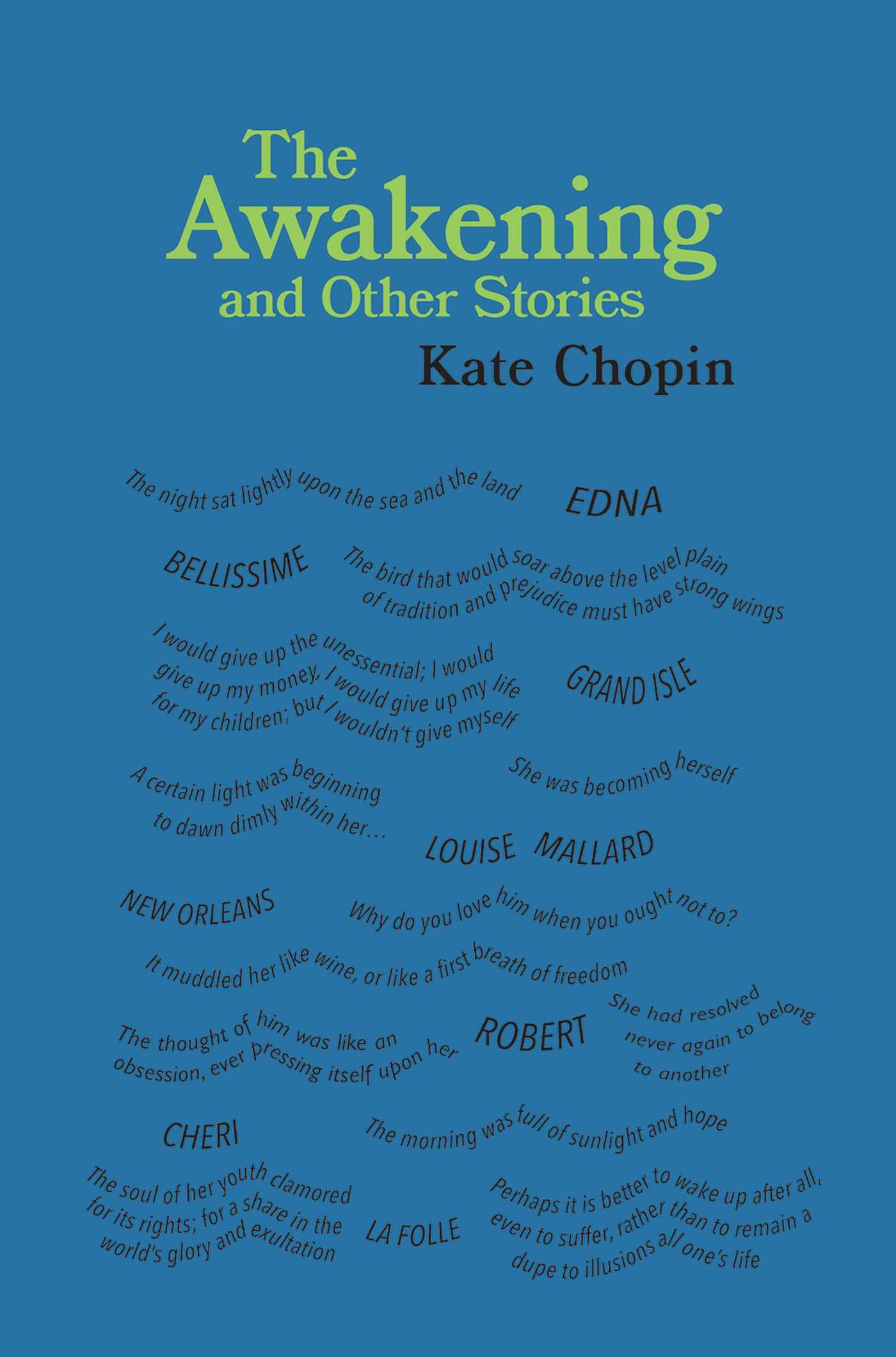
Kate Chopin was one of the very few 19th century American writers whose work explored new and startling territory. The Awakening caused much outrage and then went out of print for decades when it was first published in 1899.
Edna Pontellier is on holiday with her husband and two young children when she is pursued by the charming and unmarried Robert Lebrun. It leads to an affair that has Edna wanting to break away from her passionless marriage.
The story about a woman defying societal norms is among the boldest and earliest works of feminist fiction and regarded as a proto-feminist masterpiece today. Laced with humor but ultimately heartbreaking, Chopin’s transformative stories that emphasize women’s roles in society were all ahead of their times, but raise vital questions and concerns even today.
Horrors of Holocaust : A book review
I find war stories horrifying. They always send a shiver down my spine, even if they’re fiction. I guess that’s because you know something similar has probably happened somewhere and continues to happen across borders even today. Real-life accounts are worse because someone has actually suffered and you can’t fathom how humans can be so cruel to inflict unimaginable pain on others.
‘The Librarian of Auschwitz’ by Antonio Iturbe is based on the experiences of Czech teen Edita (Dita) Kraus who was a prisoner at the Auschwitz concentration camp. Though Iturbe interviewed Dita to write the novel, the book is actually a fictionalized account of real-life events.
Dita and her parents led a privileged life in Prague—her father was a reputed lawyer—before being taken to Auschwitz and then to the Bergen-Belsen concentration camp. Besides narrating Dita’s experiences at the camp, Iturbe also richly imagines the lives of those around her while building a narrative that stays as close as possible to real instances.
When she was 14, Dita had one of the most dangerous jobs in the camp. She was to look after the eight books that prisoners had smuggled into Auschwitz. Books were forbidden—anyone found in the possession of one would be executed—and these books were used at the secret school started by prisoners for the children of Block 31.
Dita loves books, and takes her duty as librarian seriously. She’s forever mending torn pages and checking on those who are have borrowed the books to see if they are taking proper care of them during “school hours”. Dita also doesn’t hesitate to take risks. From sewing deep pockets in her clothes to hide books to disguising herself as a man to visit her ailing father to assuming her mother’s identity to spare her from carrying a corpse, Dita shows immense courage despite being acutely aware that death is just one wrong move away.
The violence in graphic. It hurts to read. People are dragged to gas chambers, already stuffed with dead bodies. They are beaten and starved—a lone piece of carrot in their soup is considered a luxury. And there is the ever-looming threat of becoming one of Dr Mengele’s lab rats. He is notorious for cutting up people without anesthesia, when not conducting life-threating experiments on them.
However, aside from the difficult content, reading the book is fairly easy. The words just flow and the stories seem to merge. No one is made to seem unnecessarily heroic. Holocaust sufferers and survivors are all heroes in their own rights and it is this fact that shines through in The Librarian of Auschwitz.
This is an important story not only because it’s about the power of hope in the gravest of situations but also because you realize the cost of war just isn’t worth it.
This is just wrong: A book review
I don’t remember finishing a book and being this angry. ‘13 Reasons Why’ shouldn’t exist. But it does. And that makes me sad and mad. Jay Asher has written about an important issue—suicide—in the most insensitive and ridiculous manner ever.
Before 13 Reasons Why, Asher apparently only wrote humorous books. He clearly lacks the flair and the maturity to write on serious issues—I doubt his humor is any better, going by his sensibilities as evident in 13 Reasons Why.
The book got some really bad reviews—from BookTubers and reviewers I follow—but I still picked it up thinking it couldn’t be that terrible. I started it with an open mind, prepared to contest those who said the book glamorized suicide, or belittled a serious mental health problem. At most I thought Asher must have gotten some details wrong and readers and critics were being much too harsh on him.
But no. The book is awful.
Okay, I’m going to put my anger aside and try to be reasonable here as I calmly present my case as to why 13 Reasons Why belongs in the dumpster.
First, the very premise is flawed. Hannah Baker, a high school student, decides to commit suicide. Before taking the pills to end her life she records a series of audiotapes holding a few people accountable for her actions. The people she ‘blames’ for her not wanting to live anymore are students like her with their own problems. Why, if at all, Hannah’s problems are more important than the girl sitting next to her in class is not something Asher gives any thought to, thus making Hannah seem shallow and selfish.
Next, Hannah mails the tapes she makes to the first person on it with instructions to mail them to the person who follows the receivers’ name on the tape when he or she is done listening. And they can’t destroy the tapes because someone has the second set and they will be made public if the chain is broken. This just seems demented—like Hannah is spiteful and seeking revenge, like she doesn’t want people to live because she decided she wouldn’t.
Also, Hannah talking about what made her feel bad are everyday problems of a regular teenager. Besides rumors affecting people the way rumors can, nothing anyone did warrants any blame. If someone doesn’t respond to you the way you want them to, does that make him bad? And what’s with the narrative that bullying leads to suicide? It’s never that simple.
The ending of the tape—or Hannah’s story—is also problematic. Spoiler alert: Hannah goes to her guidance counselor as a last resort before committing suicide. He seems to have a genuine interest in her problems and wants to help her work it out. But something in her snaps and she bursts out of his office, despite him repeatedly asking her to wait. Hannah, running down the hallway of the school, looks back at the office door and when it stays shut and the counselor isn’t rushing after her, decides that she is done with life. Every scene seems superficial and stupid—and you can’t afford to do that when you have taken up a grave topic like suicide.
13 Reasons Why could have been a positive message about the importance of treating other people with kindness and realizing how your actions can affect others. What it is instead, owing to fickle writing and horrible character development, is a bitter suicide note where you feel no empathy for the victim.
Fiction
13 Reasons Why
Jay Asher
Published: 2007
Publisher: Penguin Books
Language: English
Pages: 288, Paperback
A portrait of a family: A book review
The lockdown has had me browsing through my own bookshelf, looking for the titles I bought a long time ago but never got around to reading. Thankfully, we all have those. That’s how I came across ‘Drowning Ruth’ by Cristina Schwarz.
_20200519210229.jpg)
Unlike quite a few books that I pulled out of my bookshelf wondering why I had bought them in the first place, this one didn’t surprise me. It was an Oprah Book Club pick and had that famous orange and white ‘O’ on the cover. A friend, who is an avid reader, once told me that Oprah Book Club picks tend to have a particular style and storyline and that if you read one you, more or less, would have read them all. She had also mentioned that they are slow, sometimes agonizingly so.
I have to thank her for the heads up because I started Drowning Ruth prepared for a slow read that never picks up. And that was why I wasn’t disappointed. Most psychological thrillers are character driven and the plot doesn’t take centerstage. I had expected that but Schwarz goes a little overboard to hammer in the point that her characters have realistic motivations behind their actions and thus parts of the book feel a little repetitive.
The good thing is Schwarz is a skilled writer and she has crafted her characters brilliantly. You love them and hate them at the same time as you see yourself in them. The suspense part of the novel isn’t well developed. You understand what’s happening early on and that kind of takes away from the story. You are just waiting for what you already know to unfold.
Drowning Ruth opens in 1919, right after the influenza epidemic that followed the First World War. Amanda Starkey, a Lutheran farmer’s daughter who works as a nurse in Milwaukee, is seduced by a married man and finds herself pregnant. She returns to the family farm and, within a year, her sister Mathilde drowns under mysterious circumstances. When Mathilde’s husband, Carl, returns from the war, he finds Amanda has taken over his household and also has full control over his daughter, Ruth. To make matters worse, she will tell him nothing about his wife’s death.
Though touted as a thriller, Drowning Ruth is essentially a portrait of the ties that bind families and sisters together and the dangers of keeping secrets. It’s about family, social obligations, the harrowing effects of guilt, and the extent to which we are willing to go to in order to protect ourselves and the ones we love. The mystery part of it is inconsequential. After all, which family doesn’t have its secrets?
About the author
Christina Schwarz is the critically acclaimed author of #1 New York Times bestseller and Oprah Book Club pick ‘Drowning Ruth’, as well as ‘All Is Vanity’, ‘So Long at the Fair’ and ‘The Edge of the Earth’. She has a MA in English from Yale. She taught high school English for several years before becoming a writer. Schwarz currently lives in southern California.
Fiction
Drowning Ruth
Christina Schwarz
Published: 2000
Publisher: Ballantine Books
Language: English
Pages: 338, Paperback
Where I’d rather be : A book review
I’m the wrong person to be reviewing Erin Morgenstern’s debut novel ‘The Night Circus’ because I loved it so much that I have lost the ability to be critical about it. So, this is basically going to be me raving and gushing about just how stunning the book is. _20200511192229.jpg)
The story is spectacular, the writing flawless, and each of the characters so brilliantly crafted that, though there’s so much going on, you feel like you know them intimately.
The Night Circus is about a circus that appears suddenly and disappears just as suddenly in different parts of the world—New York, Boston, London, and so on—and operates only during the nighttime. Here, unknown to visitors, two gifted illusionists Marco and Celia are pitted against each other in an intricate, lifelong game they don’t really understand but for which they were being trained since grade school.
Hector and Alexander are great conjurers in their own rights, and each claims to be superior to the other. Hector challenges Alexander believing that his six-year-old daughter, Celia, can beat anyone and Alexander, in turn, finds the perfect opponent in Marco. The circus, Le Cirque des Rêves (The Circus of Dreams), is their venue.
The twist: Marco and Celia fall in love and this changes the entire game.
The Night Circus is intensely visual. Each scene comes alive before your eyes. Morgenstern has created a unique world where the minutest of details are carefully planned and nothing feels out of place—even in a maze full of tents, each with its own world inside, which is fascinating to say the least.
One tent is a greenhouse made of ice filled with “the scent of rose and ice and sugar”, another has a reflecting pool full of tears that store memories, and one houses “fearsome beasts and strange creatures”. The circus also has a fire-eater, just like a regular circus. But this one sculpts flames with her bare hands. The fortuneteller uses a handful of stars instead of a crystal ball to predict the future. It’s a world like no other.
There is also a horde of intriguing characters alongside the two main protagonists. There’s Herr Friedrick Thiessen, the clockmaker and chief circus follower, Tsukiko the contortionist, Poppet and Widget, the red-haired twins born on the circus’s opening night, and Bailey, who is just a boy when he breaks into the circus to complete a dare. All have stories of their own which, even if they aren’t essential to the plotline, helps the book come together beautifully.
Unlike most books, there is neither too much dialogue nor excess descriptions in The Night Circus. Everything about it feels just right.
A lot of people pine to visit Hogwarts, the fictional school of witchcraft and wizardry in the Harry Potter series. They want to experience it firsthand. I never understood the feeling till I read The Night Circus. I wish The Circus of Dreams were an actual place.
The Night Circus is the perfect book to read if you want an escape. With its lyrical narrative and highly imaginative plotline, it transports you to a world of magic and mystery where anything is possible and love does, indeed, conquer all.
Fiction/Magical Realism
The Night Circus
Erin Morgenstern
Language: English
Published: 2012
Publisher: Vintage
Pages: 502, Paperback
Revisiting old favorites
There are some books that are always, always on my mind. The thought of these books makes me happy. These are the books I recommend to people, dip in and out of whenever I get the chance, and quote and draw analogies from. The upside of local bookstores being closed because of the lockdown is that I get to reread them without guiltily looking at the growing pile of unread books on my shelf. We all have these books. Here are mine.
All of Dahl’s books are wonderful but ‘Matilda’ is perhaps a little more so. This is a story of a little girl with extraordinary abilities—she can speed read and control objects with her mind. Her parents treat her like a “little scumbag”, but she eventually finds happiness. The idea that children can punish their parents or elders if they are “bad people” makes for an interesting premise. Moreover, Quentin Blake’s illustrations bring the story to life.
What’s more, the movie adaptation of Matilda feels like a projection of the mental imagery you have while reading the book.
I first read ‘Jane Eyre’ as a teenager and since then I have returned to it a few times. It’s one of those books where you discover new things with each rereading. When I was young (and naïve) I thought of it as the most romantic book ever. As I grew older, I couldn’t ignore the abuse and infidelity and I turned away from it in disgust. Then, later on, I was told it was a feminist novel and I tried and failed to see it that way. But the fact remains that Jane Eyre provokes emotions that compels me to return to it time and again.
Even after all these years, I’m still trying to figure out what “madness” it is that Mrs Rochester is suffering from and whether she jumped, freeing her husband to marry Jane, or she was pushed. Maybe, just maybe, this time around I will finally make up my mind.
A Man Called Ove by Fredrick Backman 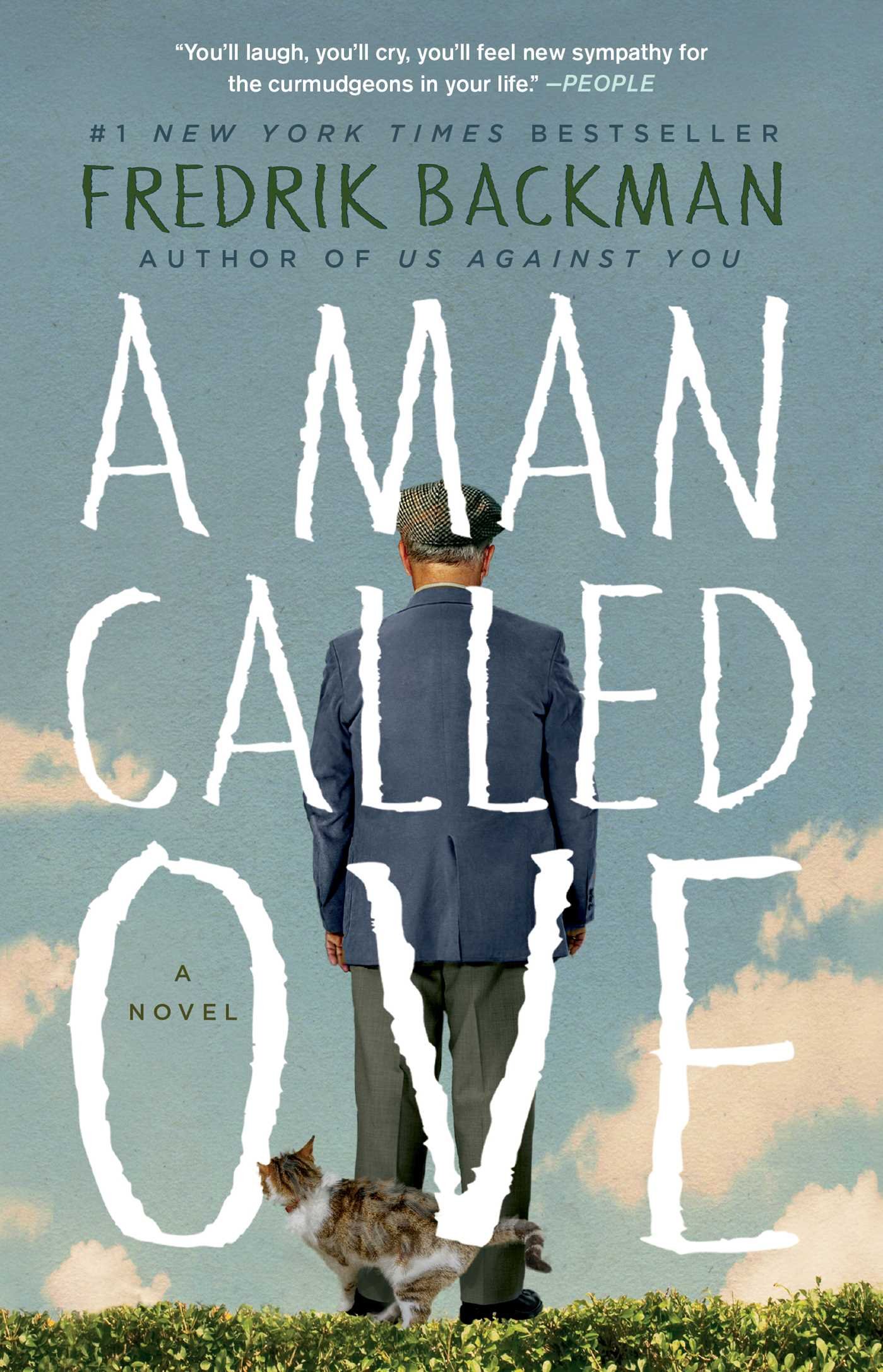
This is a relatively newer addition to my list of favorites. But if I were to be told that I could only read one book for the rest of my life, this would probably be it. I loved ‘A Man Called Ove’ so much that I’ve been recommending/gifting this to everyone since I first read it. A novel about a cranky 59-year-old Swedish widower who repeatedly tries and fails to kill himself might not seem like the perfect lockdown read. But it is: The story is essentially about finding yourself when nothing seems to be going right.
As Ove screams at his neighbors for parking in the wrong place and punches a hospital clown because his magic tricks annoy him, you can’t help but see a little bit of yourself in him and cheer him on.
Graphic and problematic : A book review
A while back, I read Karin Slaughter’s ‘The Kept Woman’ but I don’t particularly recall much of it. I recently came across a review of ‘Pretty Girls’ and it made me want to give Slaughter another shot. But lockdown meant my regular bookstore was closed. Luckily, I had a book by Slaughter lying around and I finally dusted it off the shelf.
‘Genesis’ is much older than The Kept Woman (2016), or Pretty Girls (2015). It’s, in fact, only the third book in the Will Trent series. This particular book is published under the name ‘Undone’ in the United States and under the name ‘Genesis’ elsewhere in the world.
After reading Genesis I really want to get my hands on the rest of the books in the series. Slaughter is the mistress of crime, I should say. In Genesis, she spins a spooky, creepy story that makes you want to race through the pages.
This novel starts with a woman being hit by a car. She, Anna, is naked and it looks like she has been abused. Medical investigation by Sara Linton, the attending doctor at the hospital Anna is taken to, reveals that she had been starved and tortured for weeks before the accident.
Special Agent Will Trent of the Criminal Investigation Team returns to the scene of the accident to investigate what is clearly not his case and he stumbles upon a torture chamber underground. He then finds another victim who, like Anna, had escaped from the dungeon but didn’t make it very far—she is found hanging from a tree, having taken her own life since she had lost her sight and hearing and feared being found by her kidnapper. Soon, two other women go missing and Will Trent and his partner, Faith Mitchell, work around the clock to find the women and the sadistic predator.
As someone whose television diet mostly consisted of ‘Bones’, ‘Criminal Minds’, and ‘CSI’, I thoroughly enjoyed Genesis, though I did find certain bits too graphic for my liking. It’s definitely not for the faint-hearted.
The story, if you think of it as a thriller and just that, is perfect. But the book has many flaws.
First, I had problems with how Slaughter presented her characters. They all have so many weaknesses and issues in life that it feels unreal. Second and most importantly, I was disturbed by the women in the story. They are either bitchy and successful, or nice but unsure of themselves, or appear to be strong and independent while pining for a man to make them feel wanted and loved. The stereotypes are a bit much to handle especially when today, as women, we are trying so hard to break away from them all. Worse, it’s a woman stereotyping women, and that hurts.
I will still give Slaughter another chance because I have only read two of her books so far. But I hope the entire series isn’t as condescending towards women as I found Genesis to be.
Fiction/Thriller
Genesis
Karin Slaughter
Published: 2009
Publisher: Arrow Books
Language: English
Pages: 550, Paperback
Ode to Paris : A book review
_20200422122952.jpg)
I love historical fiction and I immensely enjoyed ‘Birdsong’ and ‘Charlotte Gray’ by Sebastian Faulks. Birdsong, set during the First World War, and Charlotte Gray, a story of a British agent working with the Resistance in Vichy France during the Second World War, were bestsellers that made Faulks a favorite of many. His latest work, ‘Paris Echo’, although set in present times, is steeped in history, too. And I liked it even though I wished the storytelling had been better.
Personally, I prefer narratives that ricochet between two or more characters because that gives you a broader sense of the story as well as gets you looking at the same issue from different perspectives. It can be quite thrilling to live multiple lives that way. In Paris Echo, the narrative shifts between the two main characters, 19-year-old Tariq, a runaway from Morocco, and 31-year-old American researcher Hannah.
Tariq, who ends up lodging in Hannah’s small room, wants to find out more about his Algerian mother who died when he was 10. He was brought up in Paris, born to a French father. Hannah, on the other hand, is in Paris to study the testimonies of women who lived through the German occupation for her postdoc. Much of the book is also the stories Hannah spends her days listening to, which Tariq often helps translate. This forgotten history of wartime women that Hannah slowly uncovers is more interesting than the main characters’ stories.
The problem is that the main story can get quite confusing at times, and more so when Faulks brings in an aged puppeteer called Victor Hugo, who carries an ancient leather bag and has mayonnaise smeared on his beard. There is also a lot that feels wrong with the characterizations and thus you only connect with Tariq and Hannah on a superficial level, never really understanding or caring about what they are going through. Hannah especially infuriates you in the end when she feels “rescued” by a chivalrous Englishmen who makes her realize that she has been selfish and shallow her whole life. And Tariq’s pressing need to lose his virginity also gets a bit much after a while.
However, what’s evident and intriguing is Faulk’s deep connection with and affection for Paris and French language. He leaves no stone unturned to try and evoke a feel of the place. His fondness for quirky streets and corners of Paris jumps out in the narrative and transports you there often. France and its history have been so well brought to life in Paris Echo that had the story been a tad better crafted with a clearer connection between the past and the present, it could, no doubt, have been another masterpiece.
Fiction
Paris Echo
Sebastian Faulks
Publisher: Vintage
Published: 2018
Language: English
Pages: 298, Paperback





_20200519210108.jpg)


